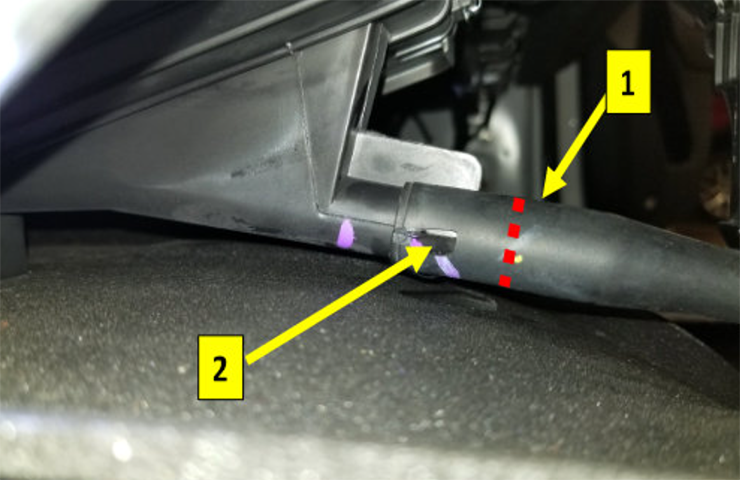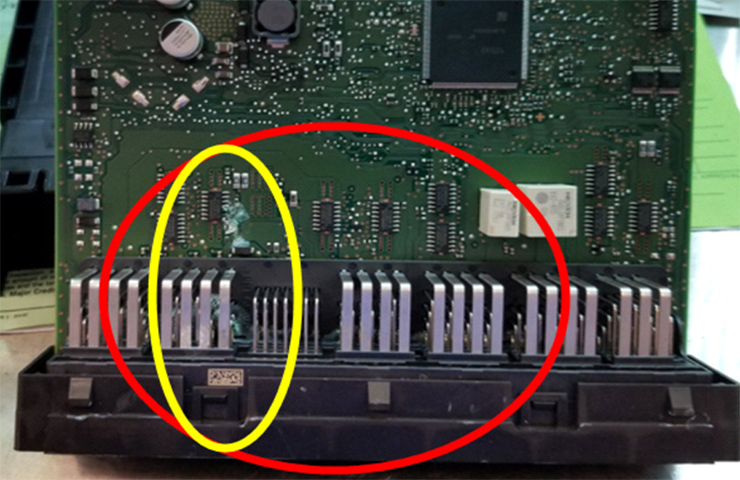The door locks may become inoperative and several communication DTCs (U codes) may set on some 2017-2022 Acadia, XT5; 2018-2022 Enclave, Traverse; 2019-2022 Blazer; and 2020-2022 XT6 models. Other conditions that may occur include illuminated instrument panel lights while driving and unwanted horn or hazard warning flasher operation. DTCs B3125, B3130, B3135, B3979, B3980 also may be set.
These conditions may be caused by possible water intrusion to the Body Control Module (BCM) from the HVAC drain hose leaking at the connection to the HVAC module.
If the vehicle has inoperative door locks or the instrument panel lights illuminate while driving, and DTCs B3125, B3130, B3135, B3979, B3980 are set in the BCM, check for possible water intrusion to the BCM.
HVAC Drain Hose Connection
Begin diagnosis by inspecting for water on the HVAC drain shield, wiring or BCM connectors behind the right front floor console extension panel.
If water is not observed, remove the left lower hush panel (if equipped) and the left front floor console extension panel to observe the HVAC drain hose. Start the vehicle, turn the A/C to a low temperature, and set the blower at maximum speed. Once the vehicle has been running long enough for water to begin draining from the hose, inspect the hose connection to the HVAC module on both sides. Check that the hose is clear and free of any kinks.
If there is a leak at the drain hose connection to the HVAC module, water will be seen at the notch in the hose or just above it. (Fig. 9, #2)
To prevent any current or potential leaking, add a tie strap to the drain hose, below the locking nib near the top of the hose connection. (Fig. 9, #1)
 Fig. 9
Fig. 9
BCM Inspection
If water was leaking from the drain hose, inspect the BCM for any signs of corrosion on the terminals or in the connectors.
TIP: In order to prevent possible electrostatic discharge damage to the BCM, do not touch the connector pins on the BCM. Electronic components used in the control systems are often designed to carry very low voltage and are susceptible to damage caused by electrostatic discharge. Less than 100 V of static electricity can cause damage to some electronic components. By comparison, it takes as much as 4,000 V for a person to even feel a static discharge.
Any signs of water leakage on the BCM will require disconnecting the BCM and opening the case for an internal inspection. (Fig. 10)
 Fig. 10
Fig. 10
Look for corrosion and damage to the BCM (Fig. 11, red circled area). Any internal corrosion (Fig. 11, yellow circled area) will require replacement of the BCM.
 Fig. 11
Fig. 11
For more details and part information, refer to Bulletin #21-NA-183.
– Thanks to Tom Burlingame
Updated November 19, 2021


















